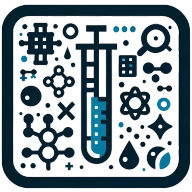6 Common Misconceptions About Drug Testing Explained
Drug testing is a complex and often misunderstood process that affects many individuals in various settings. Despite its widespread use, there are numerous misconceptions about how drug tests work and what they can accurately detect. Understanding the realities of drug testing is crucial for both those administering tests and those subject to them.
- Drug Test Detection Windows Vary Widely
- Recent Use May Evade Detection
- Test Types Offer Different Detection Periods
- Lab Tests Surpass Home Kit Accuracy
- Tests Can't Distinguish Legal From Illegal Use
- Passive Exposure Rarely Triggers Positive Results
Drug Test Detection Windows Vary Widely
One of the biggest misconceptions I've encountered is that drug tests can detect usage immediately or long after the fact, depending solely on the test type. In reality, detection windows vary greatly based on the substance, frequency of use, and the individual's metabolism. For example, occasional cannabis use might only be detectable in urine for a few days, but heavy use can linger for weeks.
I often tell people that assuming a single test can definitively prove recent or past use without context is misleading. It's important to understand that no test is perfect, and false positives or negatives can occur. Therefore, if someone believes a drug test will catch everything instantly or indefinitely, I'd advise them to learn about the specific test's limitations and factors affecting results. This knowledge helps set realistic expectations and reduces unnecessary anxiety.

Recent Use May Evade Detection
Drug tests do not always detect recent substance use. The ability to detect drug use depends on various factors, including the type of test, the substance used, and individual metabolism. Some drugs leave the system quickly, while others can be detected for longer periods. Factors like hydration, body mass, and frequency of use also play a role in detection.
It's important to note that a negative test result doesn't necessarily mean a person hasn't used drugs recently. For accurate information about drug detection times, consult with a medical professional or certified testing facility. Stay informed about the limitations of drug testing to make better decisions about your health and well-being.
Test Types Offer Different Detection Periods
Different drug tests have varying detection windows. Urine tests, which are commonly used, can detect most drugs for a few days after use. Blood tests generally have a shorter detection window, often limited to hours or a couple of days. Hair tests, on the other hand, can detect drug use for several months, providing a longer historical view.
Saliva tests typically detect very recent use, usually within the last 24-48 hours. Factors such as drug type, dosage, and individual metabolism can all affect these timeframes. Understanding these differences is crucial for interpreting test results accurately. Educate yourself about the specific type of drug test being used to better comprehend its capabilities and limitations.
Lab Tests Surpass Home Kit Accuracy
Home drug tests are not as reliable as laboratory tests. While home tests can provide quick results, they are more prone to errors and false readings. Laboratory tests use more sophisticated equipment and techniques, allowing for greater accuracy and sensitivity. Home tests may also be affected by user error or misinterpretation of results.
Additionally, laboratory tests often include confirmation testing to verify positive results, which home tests lack. Professional lab tests can also detect a wider range of substances and lower concentrations of drugs. It's important to remember that home test results should not be considered definitive. For the most accurate and reliable results, always seek professional laboratory testing when it matters most.
Tests Can't Distinguish Legal From Illegal Use
Drug tests cannot differentiate between legal and illegal use of substances. Many prescription medications can trigger positive results for illegal drugs due to similar chemical structures. For example, some over-the-counter cold medications can cause a positive result for amphetamines. Similarly, prescribed opioid painkillers may lead to positive results for opiates.
This limitation of drug tests can lead to misunderstandings or false accusations. It's crucial for individuals to disclose all medications they are taking before a drug test. In cases where legal use is in question, further investigation or more specific testing may be necessary. Always communicate openly with healthcare providers or employers about any prescription medications to avoid potential misunderstandings during drug testing.
Passive Exposure Rarely Triggers Positive Results
Passive exposure to drugs does not always lead to positive test results. While it's a common concern, especially for substances like marijuana, the levels of exposure required to trigger a positive result are typically much higher than what occurs through casual, passive contact. Most drug tests are designed with cut-off levels to prevent false positives from minimal exposure. However, it's important to note that in rare cases of extreme, prolonged exposure, there is a small possibility of a positive result.
Factors such as ventilation, proximity to the substance, and duration of exposure can all play a role. To minimize any risk, it's advisable to avoid environments where heavy drug use is occurring. If you have concerns about potential passive exposure, discuss them with the entity conducting the drug test for clarification.

